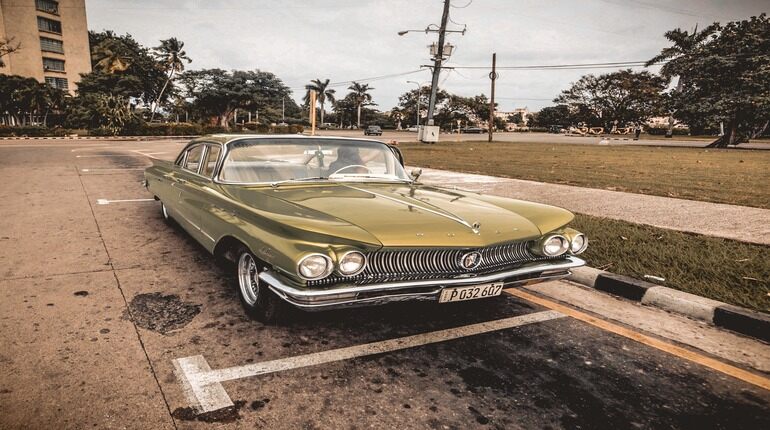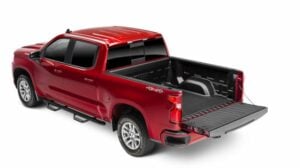You’re not alone if you wonder whether your old Buick car drains your wallet more than it should. There are difficulties associated with owning an older car, and knowing when to sell might be a wise financial move. We will discuss the benefits of trading in your old Buick and the red flags suggesting that your old Buick could have a price tag; therefore, if you sell your old Buick, consider the following factors.
Frequent Repairs
One of the obvious signals that your old Buick is turning into a money pit is the number of maintenance it requires. Therefore, if you visit a mechanic regularly, it may be imperative to work out the total repair cost compared to what the vehicle is now worth. A pattern of breakdowns and fixes can strain your budget and make selling a more appealing option.
Common Issues with Older Cars, Especially Buicks
Old cars become more prone to several issues as well. Some of the most common issues with older cars include:
Older cars have oil leaks – Due to the natural deterioration of seals and gaskets that hold the oil inside. It could result in poor lubrication, insufficient oil levels, and engine failure.
Cooling system issues – The cooling system helps prevent an engine from getting too hot. The radiators and water pumps in older cars can also give out, resulting in possible engine damage by way of overheating.
Electrical issues – Older cars are vulnerable to electrical problems, including poor illumination, faulty windows, or an engine failure to start.
Transmission problems – The transmission transfers power from the engine to the wheels. Older cars may have problems with the transmission fluid, solenoids, or gears, leading to shifting problems or complete transmission failure.
Declining Fuel Efficiency
As cars age, their fuel efficiency tends to decrease. If you notice a significant drop in your Buick’s miles per gallon (MPG) despite regular maintenance, it could be a sign that the engine and other critical components are not performing optimally. Selling your old car and investing in a more fuel-efficient model could save you money in the long run.
Impact of Aging on Fuel Efficiency
Several factors contribute to declining fuel efficiency as a vehicle ages. These include:
Engine Wear and Tear – Engine components experience wear and tear over time, reducing efficiency. Worn piston rings, valves, and bearings allow unburned fuel to escape, while worn spark plugs can misfire, causing incomplete combustion.
Fluid Degradation – Engine oil, transmission fluid, and other lubricants break down over time, losing their viscosity and ability to protect moving parts. This can lead to increased friction and energy loss, reducing fuel efficiency.
Clogged Air Filter – A clogged air filter restricts airflow to the engine, forcing it to work harder and burn more fuel.
Sensor Malfunctions – Various sensors provide feedback to the engine control unit (ECU), influencing fuel injection and ignition timing. Malfunctioning sensors can lead to accurate readings and efficient fuel usage.
Exhaust System Leaks – Leaks in the exhaust system allow exhaust gases to escape before reaching the catalytic converter, reducing its effectiveness in converting harmful pollutants into cleaner emissions. This can also affect fuel efficiency.
Outdated Safety Features
Advancements in automotive safety technology have been substantial in recent years. Consider an upgrade if your Buick lacks modern safety features such as collision warning systems, automatic emergency braking, or lane departure warning. Investing in a newer model with enhanced safety features can improve your peace of mind and lower insurance costs.
Signs of Outdated Safety Technology in Older Buick Models
Older Buick models may have a different level of safety technology than newer models. Here are some signs that your Buick may have outdated safety technology:
The absence of airbags, aged, or insufficient air-bag system. Airbags are found in newer Buick models, while older Buick models do not have airbags, or their airbag systems are antiquated and offer lower protection than modern airbags.
Lack of sophisticated driving aides (ADAS); some older Buicks need these features, although they are widespread in modern cars. These qualities can warn the driver and take over control of the car.
Seat belts for front seat passengers only in the 60’s and 70’s. It’s necessary to mount all the seat belts for all the passengers if you have a Buick vehicle manufactured during this period.
Absence of anti-lock brakes (ABS). ABS helps prevent the wheels from locking up in a panic stop, which can help maintain vehicle control. Older Buick models may have something other than ABS.
No crumple zones. Crumple zones are designed to absorb the impact of a collision and protect the vehicle’s occupants. Older Buick models may not have crumple zones.
If you are concerned about the safety of your older Buick, you should have it inspected by a qualified mechanic. They can identify any outdated safety features and recommend upgrades. You can also find more information about the safety of your particular Buick model by consulting the owner’s manual or contacting Buick customer service.
Rising Insurance Costs
As cars age, insurance costs can increase due to the higher likelihood of mechanical issues and the rising costs of replacement parts. Compare the insurance premiums for your old Buick with those of newer, more reliable models. If the difference is significant, selling your old car and purchasing a newer one may lower insurance expenses.
Decreased Resale Value
The resale value of a car naturally declines over time, but some factors can accelerate this process. If your Buick model has experienced a sharp decrease in resale value due to factors like a high mileage count, extensive wear and tear, or outdated features, selling it sooner rather than later might be more cost-effective.
Diminishing Resale Value of an Old Buick
The resale value of an old Buick is influenced by several factors, including:
- Market Demand for Newer Models
Traditionally, “Buick” is a brand that appeals to an elderly audience. Recently, the brand has attempted to target teenagers by introducing fresher designs and more up-to-date specifications for new models. This has led to increased demand for new Buick models while the market for older Buicks continues to shrink. For example, it can be noted that older Buick cars are sold at a significantly lower price than their competitors.
- Technological Advancements in Newer Vehicles
The newest technology in the dynamic automotive industry is always installed in new cars. These include sophisticated safety features, smart entertainment options, and highly efficient powertrains. Therefore, Buick cars are unattractive to people who want the latest technology in their automobiles, as some older Buicks may even require such.
Conclusion
Deciding when to sell your old Buick is a personal and financial choice that requires careful consideration of various factors. If you recognize the multiple signs mentioned above, it might be time to explore selling your old Buick. Not only can this decision save you money on repairs and maintenance, but it also allows you to upgrade to a more fuel-efficient and technologically advanced model.






